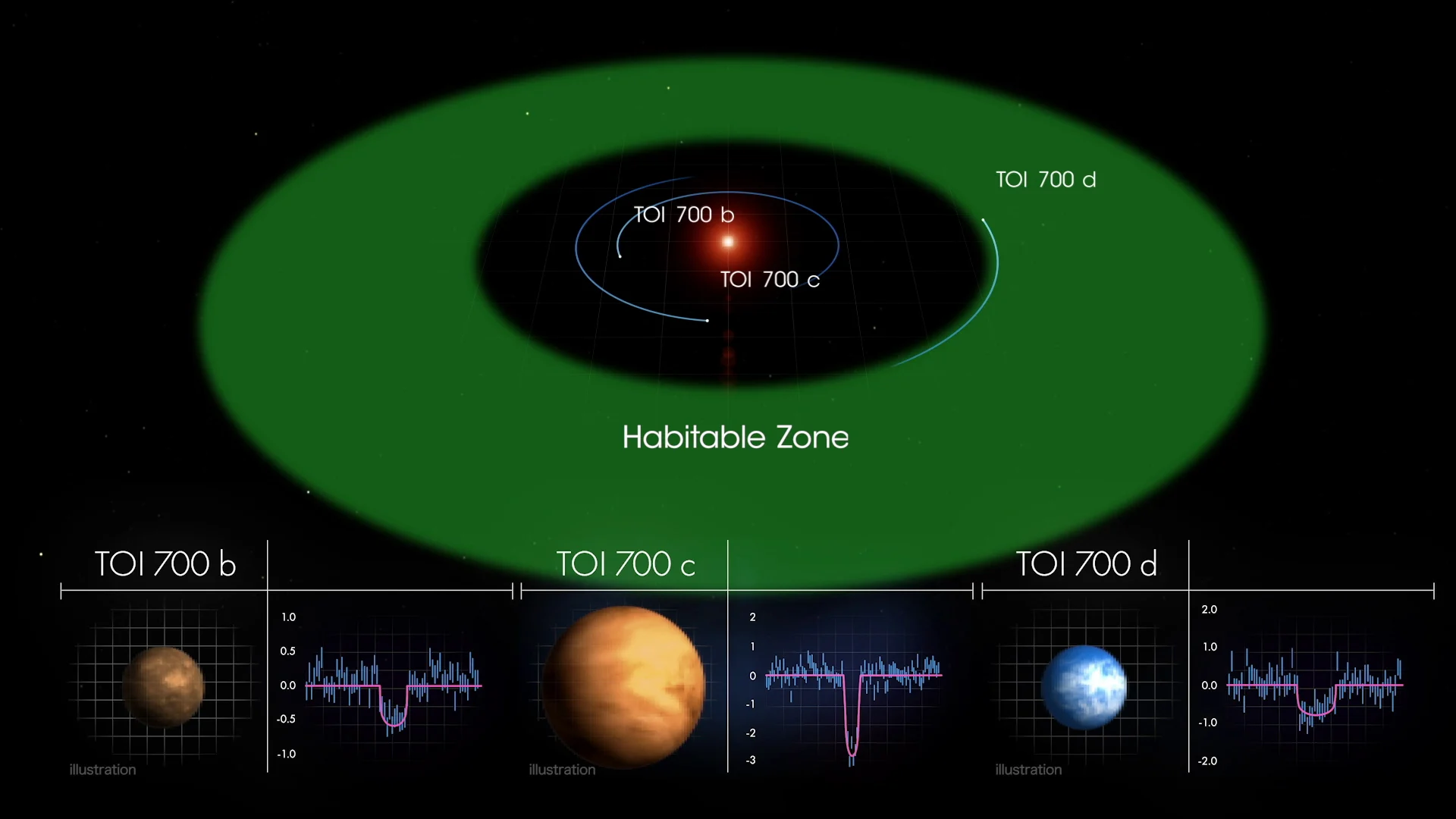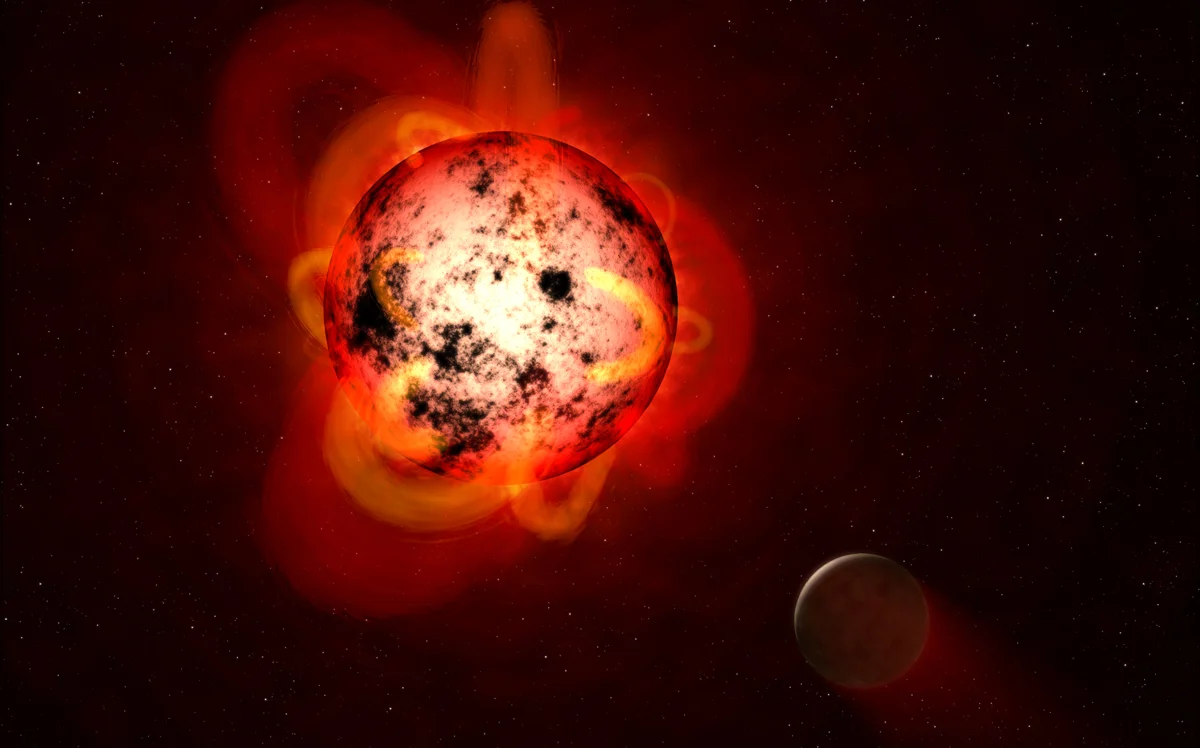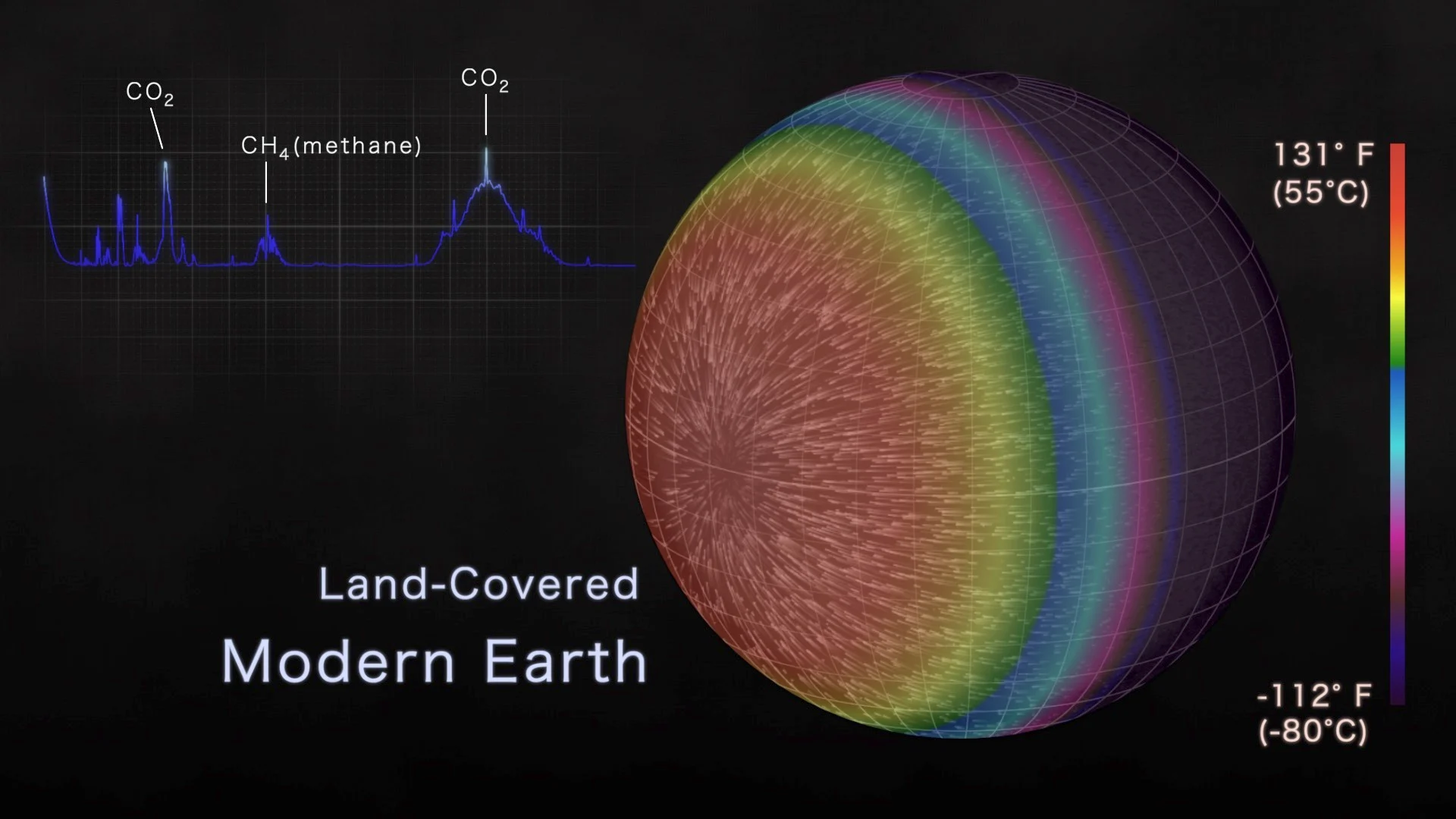
NASA TESS spots its first Earth-sized alien world that could be habitable!
Something looked 'off' about this TESS detection, and it led to an amazing discovery!
It's been a little over a year since NASA's Transiting Exoplanet Survey Satellite started scanning space for nearby alien worlds, and it has now found its first Earth-sized exoplanet that could, potentially, be considered habitable.
This newfound alien world, named TOI 700 d, was reported during the 235th Meeting of the American Astronomical Society, going on this week in Honolulu, Hawai'i. It was spotted by the Transiting Exoplanet Survey Satellite (TESS) as it circled a quiet red dwarf star known as TOI 700, which is located roughly 100 light years away from us in the southern constellation of Dorado ("the swordfish").
With this star located so close to the celestial south pole, TESS was able to watch it for nearly an entire year, as the telescope performed its first complete scan of 'southern space' (watch below).
This nearly continuous observation allowed the telescope to capture numerous 'transits', which showed up as periodic dimming of the star's light, as planets orbiting around it passed directly between the star and Earth. When astronomers working with the mission analyzed them, they discovered that these transits resolved down to three planets circling the star, very close in.
There was one problem, though. Initially, TOI 700 was logged as being a bright, yellow star, similar to our Sun, and the three planets detected around it were transiting very quickly across it, and cutting off a significant amount of its light as they completed each of their transits. That meant that they were big planets, probably gas giants like Jupiter and Saturn, and they were very hot - like Venus or Mercury hot.
Things got much more exciting with this discovery when the researchers working on it, which included high school student and citizen scientist exoplanet hunter Alton Spencer, realized that there was an error with the star's classification. TOI 700 wasn't Sun-like, but instead, it was a small red dwarf star, roughly 40 per cent the mass of the Sun. This changed things up and revealed just how important this discovery was!
"When we corrected the star's parameters, the sizes of its planets dropped, and we realized the outermost one was about the size of Earth and in the habitable zone," said Emily Gilbert, a graduate student who studies exoplanets at the University of Chicago's Department of Astronomy and Astrophysics.

The TOI 700 planetary system, with artist impressions of all three of the planets discovered there by NASA's Transiting Exoplanet Survey Satellite. Credit: NASA's Goddard Space Flight Center
The so-called 'habitable zone' is a band of space around a star where the temperature is just right - not too cold or too hot - so that liquid water could exist on the surface of a rocky planet, similar to Earth.
According to NASA: * "The innermost planet, called TOI 700 b, is almost exactly Earth-size, is probably rocky and completes an orbit every 10 days. The middle planet, TOI 700 c, is 2.6 times larger than Earth — between the sizes of Earth and Neptune — orbits every 16 days and is likely a gas-dominated world. TOI 700 d, the outermost known planet in the system and the only one in the habitable zone, measures 20% larger than Earth, orbits every 37 days and receives from its star 86% of the energy that the Sun provides to Earth. All of the planets are thought to be tidally locked to their star, which means they rotate once per orbit so that one side is constantly bathed in daylight."*
"Additionally, in 11 months of data we saw no flares from the star, which improves the chances TOI 700 d is habitable and makes it easier to model its atmospheric and surface conditions," Gilbert added.
Probably the easiest way to find Earth-sized exoplanets is to look for those that circle red dwarf stars. This is because, with the star being so small, rocky planets like Earth still block a significant portion of the star's light. Additionally, exoplanets often orbit close-in to the dwarf star, completing one full orbit in just a few days or weeks here on Earth. So, you only need to watch one of these stars for a very short amount of time to get enough transits to tell if a planet is there.
The unfortunate thing is, red dwarf stars tend to be very active, blasting out intense solar flares that can reduce any of these close-in potentially-habitable worlds to sterilized wastelands. At the very least, it becomes very difficult for astronomers to model what the planet's environment could be like since an active star would throw so much uncertainty into the mix.

This illustration shows a red dwarf star orbited by a hypothetical exoplanet. Credits: NASA/ESA/G. Bacon (STScI)
So, this discovery that there were no flares emitted from TOI 700 for nearly a year is encouraging!
There is still the possibility that the star was in a quiet phase during TESS' observations, similar to the 'solar minimum' our own Sun is going through now. Further observations by TESS can confirm if this star is a quiet one, but in the meantime, it was one less thing for the researchers to worry about when attempting to model the climate of TOI 700 d.

*One of 20 climate models of TOI 700 d, this version uses a simulated spectrum from the atmosphere (top left) and assumes that the planet is a reasonably dry world, similar to modern-day Earth. With the planet being tidally-locked to its star, the sunward side (on the left) receives all the direct heating. Heated air rises at the point directly facing the star, drawing in strong winds from the dark side of the planet that converge on that spot. Credit: Engelmann-Suissa et al./NASA's Goddard Space Flight Center
"Someday, when we have real spectra from TOI 700 d, we can backtrack, match them to the closest simulated spectrum, and then match that to a model," said Gabrielle Engelmann-Suissa, a visiting scientist at NASA's Goddard Space Flight Center who led the modelling team. "It's exciting because no matter what we find out about the planet, it's going to look completely different from what we have here on Earth."
Sources: NASA Goddard | NASA JPL











